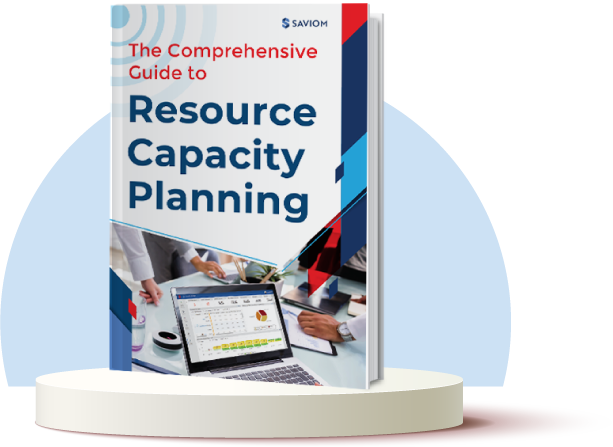“In times of great stress or adversity, it’s always best to keep busy, to plow your anger and your energy into something positive” – Lee Iacocca
Certainly, we all can relate to this adage as most of us have experienced stress at the workplace and tried one of these ways to cope with it.
The question is, how does this stress creep in?
It starts shaping up when the expectations and demands from the job’s role start exceeding the employees’ capability. Besides, lack of communication, a toxic work environment, and other personal reasons can also induce workplace stress.
Adding to these factors was the onset of the COVID-19 pandemic. Even though everyone enjoyed the perks of working from home, minimized human interactions, increased loneliness, zoom fatigue, etc., became significant stressors.
The American Institute of Stress reports that 65% of workers said workplace stress had caused difficulties, and more than 10% described these as significant effects.
To minimize these repercussions of stress, dealing with it at the right time is imperative.
This blog emphasizes the causes and consequences of workplace stress and effective ways to manage it.
What are the causes of stress at work?
Employees aim to put their best foot forward at the workplace, increase their productivity and earn their way towards professional growth. However, regardless of their best interests and efforts, they will face numerous triggers that can affect their performance and cause distress.
Here are some of the factors which lead to workplace stress:
Lack of communication
Lack of communication between employees and managers creates ambiguity in clearly understanding the job roles, company goals, and expectations. When employees do not have clarity, they will not have a definite sense of direction which will eventually cause stress.
Communication is not just about speaking. It also refers to non-verbal signals, active listening, and understanding. If employees sense a lack of interest from their leaders, they stop expressing their opinions freely. This lack of human interaction can make the employees feel detached and lonely, making them stressful and anxious.
Constant overload of work
Employees suffer from work overload when their tasks exceed their capacity. Constant work overload could force them to work for longer hours, and it could even spill over to the weekends. This could eventually keep them from attaining a healthy work-life balance.
When the resources cannot spare time for themselves or their loved ones to rejuvenate and relax, it impacts their work-life balance, alleviating their stress. Moreover, the constant work pressure could also prevent them from taking short breaks that would help them recharge and work with renewed vigor.
Read More: Why is the Overallocation of Resources Bad for You?
Conflict amongst team members
Conflicts at work are common and often create a negative atmosphere, making the workplace more stressful. While disputes arise from the slightest disagreements, they can eventually turn hostile and make the office frustrating for the entire team.
In such cases, the team’s collaboration will suffer, the group morale gets affected, eventually reducing the team’s productivity.
Unhealthy environment
Employees who are unhappy with their working environment also tend to face immense stress and anxiety. A toxic environment where others indulge in negative gossip or vent problems is unhealthy and can affect the peace of mind. The absence of proper facilities, such as insufficient lighting, inadequate equipment, and crowded seating arrangements, could also become substantial causes of stress.
A study conducted by the Rand Corp., Harvard Medical School, and the University of California shows that one in five Americans have a hostile or threatening work environment.
Personal reasons
An employee’s personal matters can affect their mental health and cause distress. These reasons can be plenty, such as major life decisions, loss of a loved one, accidents, financial problems, and many more.
The problem arises when the employees are unable to separate their professional and personal lives. It goes on to take a toll on their performance, responsiveness, and efficiency at work.
Let’s now understand the impact these causes can have at work.
Consequences of stress at work
Unmanageable or excessive stress at the workplace could impact the employee’s mental and professional well-being, work performance, etc.
Here is a list of some of the consequences:
Reduce productivity
Increased stress at work makes the employees lose their focus. When workers feel there is too much on their plate, they will feel overwhelmed and fail to understand where to begin with. The constant stress will also make the employees feel physically drained and eventually lower their productivity.
The Anxiety and Depression Association of America (ADAA) reports that 56% of workers state that stress and anxiety affect their workplace productivity.
Low morale
Lack of communication, unclear instructions, absence of trust, and micromanagement are some of the reasons that can negatively impact employees’ confidence and lower their morale. Employees’ morale will also be affected when managers do not show respect or lack empathy while giving negative feedback. Soon, the employees start feeling disengaged from the workplace and become emotionally exhausted. Low morale can also lead to a lack of participation in team events and reduce productivity.
Increased physical ailments
When the employees are stressed, they are under intense mental pressure. Unfortunately, this mental pressure goes on to harm the employee’s physique as well. Stress leads to insomnia, elevating other physical issues such as prolonged fatigue, recurrent headaches, etc. Moreover, physical ailments such as obesity, diabetes, and increased blood pressure are other commonly observed symptoms of workplace stress.
In a study by Korn Ferry, 66% of American workers have said that they have lost sleep due to work stress.
High absenteeism and rate of turnover
As discussed earlier, excessive stress can derail your physical well-being. When your health is not up to the mark, you don’t feel like showing up at work, which leads to unplanned absences. Moreover, stress also reduces the employee’s motivation levels. The loss of motivation also keeps them from being regular at the workplace. This leads to disengagement, and eventually, it compels the workforce to look for better opportunities elsewhere.
Read More: How to Reduce Absenteeism in the Workplace
Compromised quality of work
Stress has a domino effect on one’s physical and mental well-being, which gradually reflects in their work rate. The quality of work that employees turn in gets affected when they are not at their productive best. The pressure may start to show itself in the form of missed deadlines and unfinished work. Even if they manage to finish the tasks on time, the final results may often be low in quality and unsatisfactory. The relentless stress and anxiety will also make them disengaged and make the work error-prone.
Adverse effect on mental health
This one is a no-brainer. Naturally, if the brain is constantly over-worked, it will disrupt the mental well-being of employees. Constant stress will create anxiety, burnout and eventually push them towards chronic depression. In addition, employees could sometimes resort to unhealthy measures such as alcohol and tobacco abuse to cope with it.
The consequences of stress can be harmful to an employee. So here are some ways you can follow to reduce workplace stress.
Read More: 7 Best Practices to Eliminate Work Stress and Enhance Productivity
Best ways to manage stress in the workplace
Now that you know the causes and effects of stress, it is time to act and tackle the challenge head-on. Some active initiation from your end can help ensure that workplace stress does not get the better of you and your performance.
Some practical steps to keep stress at bay are mentioned below:
Set achievable daily targets
Planning the day’s objectives is an effective measure to relieve yourself of stress in the workplace. That’s because when you pen down all the to-be-done tasks, you know what needs to be accomplished even before the day begins. This sets the tone for the whole day, giving you clarity. Note that when forming the day’s to-do lists, you have to keep an eye out for the viable projects and those that need your immediate attention.
Understanding your daily workload and prioritizing can help you create a realistic list that does not overwhelm you or cause distress. For example, you could use the Pareto principle or the 80/20 rule here, which says that 20% of what you do throughout the day matters and goes on to bring out 80% of your results. So, you can analyze the critical (20% of work) that adds 80% of the value and get them done first to make the whole day manageable.
Avoid ‘What-If’ thinking
Have you ever found yourself in an endless loop of thoughts after work submission like- ‘what-if I would have taken a different approach?’, ‘what-if plan B was better than plan A?’. Sounds stressful, right? One needs to understand ‘What-if’ thinking after completing tasks or delivering the projects is futile. Since the work is already completed and done right, there is nothing that you can do about it by pondering about different scenarios. It will only add to your work stress.
In addition, the saying‘ too much analysis leads to paralysis’ can be applied here. If required, you can assess the different results through what-if analysis before initiating the tasks. It will help you gauge every aspect of the project and generate better output. Having a result-driven approach and planning the work accordingly gives you a much-improved outcome.
Read More: How to Perfect Resource Scheduling Techniques within Project Planning?
Take frequent breaks
There are numerous benefits of taking frequent breaks at work. It helps you to freshen up, relax your mind, and allows you to concentrate with revamped energy. These breaks will enable you to rejuvenate, articulate your thoughts, and understand how much work you’ve done and what’s left.
Using some scientific time management techniques can add to this and enhance your work efficiency. They help you achieve more within shorter periods while giving you the breaks you need. For example, you can follow the Pomodoro Technique, which uses a timer to break down work into 25-minute intervals while allowing you to take short breaks in between. This technique increases your focus, productivity and enables you to generate better results.
Stay physically active
Staying physically active helps release endorphins in your body and allows you to cope better with stress at work. Endorphins are hormones released by the central nervous system to relax and reduce pain or discomfort. Activities such as jogging or walking are great physical exercises that release these hormones and keep you healthy.
However, if you have a hectic lifestyle and cannot find time for workouts, you can stay physically active even at the workplace. For example, instead of taking the elevator, you can always use staircases. You can even take mid-day walks within the office itself. Performing yoga or mediation is another great way to keep stress at bay.
A survey by the APA shows that 33% of highly stressed adults admit that they feel less stressed after exercising.
Make yourself comfortable at the workplace
The level of comfort at the workplace can improve your attitude towards work. The added comfort will provide a significant boost to your morale and productivity. Comfort is subjective and may vary from person to person, but the tiniest of modifications can go a long way in alleviating stress.
From finding the right ergonomic chair to ensuring optimum lighting and sharing an open workspace, there can be many ways that enable you to have a more enjoyable experience while you work. Moreover, you can keep small succulents around you that radiate positive vibes. Thus, how you design your work environment plays an integral role in defining workplace positivity.
Read More: 7 Powerful Insights on Sustaining High-Performance Work Teams
Develop conflict resolution skills
Anger and frustration result in conflict in the workplace, which adds stress. You should also beware that indulging in constant debates and disagreements can lead to unnecessary disputes. Engaging in active listening and showing a willingness to compromise with ideas that oppose your point of view could also go a long way in keeping you stress-free.
Working on your emotional intelligence and negotiation skills can help you reduce the tension when tempers are flaring at the office. In addition, practical conflict resolution makes space for teamwork and allows you to maintain better relations at work. This generates positivity and thereby alleviates stress.
Maintain a healthy work-life balance
Maintaining a healthy work-life balance is essential for managing stress and plays a crucial role in improving productivity. If you do not maintain the balance, your physical and mental health will suffer, along with your performance at the workplace. A good way to manage it is to ensure that you do not work or pick up work-related calls outside office hours unless there is an emergency.
In addition, you could also take advantage of holidays or paid leaves at work and use them to go on vacations. Outstation trips are a great way to relax away from work pressures, and when you return, you will be fully recharged too.
Read More: 9 Effective Tips on Enhancing Employee Performance at Work
Conclusion
As previously mentioned, stress at work is productive to some extent. It keeps you alert and pushes you to work faster. However, prolonged exposure to stress and anxiety is undesirable and taxing. While there are many methods that ensure you are not burned out, you must know what works for you and what does not. Finally, the onus lies in you to be mindful of your commitment and keep yourself stress-free.
So, do you manage stress at the workplace?
The Glossary
Read More: Glossary of Resource Workforce Planning, Scheduling and Management
SAVIOM Solution
SAVIOM has over 20 years of experience helping multinational clients manage their resources efficiently and effectively. With over 20 years of experience, this Australia-based MNC has a global presence across 50 countries and has helped 100+ clients meet their specific business goals. Saviom also provides tools for project portfolio management, professional service automation, and workforce planning software. So, SAVIOM can help your business to establish an efficient system geared towards your specific business challenges.










